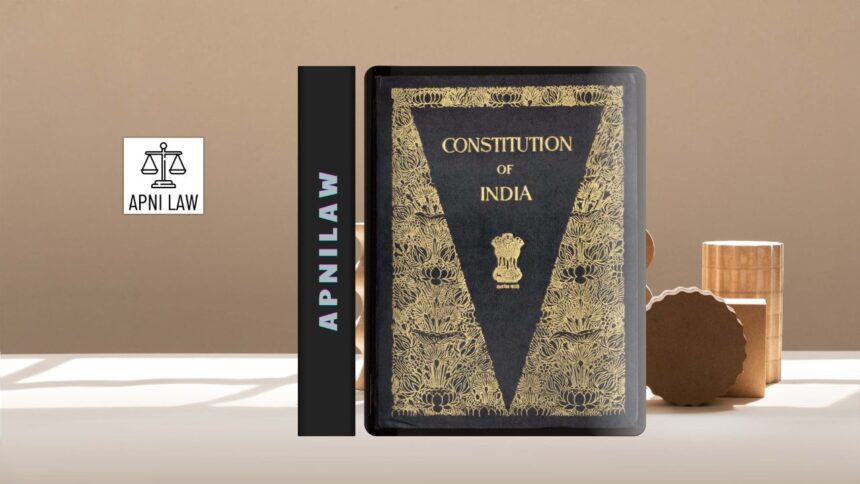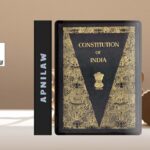Introduction
The Indian Constitution is often described as the backbone of the world’s largest democracy. It defines governance, secures rights, and guarantees justice for every citizen. Behind its creation stood the relentless work of the Constituent Assembly, which debated, struggled, and shaped constitutional ideals for a new nation. Among its committees, the Drafting Committee was the most vital because it converted broad ideas into legal clauses that determined how the Republic would function.
At the center of this effort was Dr. B.R. Ambedkar, a visionary statesman, social reformer, and jurist. His leadership earned him the title of the “Architect of the Indian Constitution.” He ensured that the Constitution was not only democratic but also sensitive to India’s social and cultural diversity. Studying the Drafting Committee’s journey and Ambedkar’s role helps us appreciate one of the most important moments in modern Indian history.
Formation of the Drafting Committee
On 29 August 1947, the Constituent Assembly set up a seven-member Drafting Committee with Dr. B.R. Ambedkar as Chairman. The members included N. Gopalaswami Ayyangar, Alladi Krishnaswami Ayyar, K.M. Munshi, Mohammed Saadullah, B.L. Mitter, and D.P. Khaitan. Later, T.T. Krishnamachari and N. Madhava Rau replaced Mitter and Khaitan.
The committee faced a massive task. The Assembly had already debated broad principles on rights, administration, and federalism. What the nation needed now was a precise draft that could become the supreme law. The committee studied foreign constitutions, considered India’s unique social needs, and wrote a document that balanced democracy with stability.
Role and Responsibilities of the Drafting Committee
The Drafting Committee translated Assembly debates and decisions into a single, consistent text. It released the first draft in February 1948 for public and Assembly feedback. Suggestions poured in from across the country. After reviewing these, the committee prepared a revised draft in November 1948. The Assembly debated it clause by clause for nearly two years.
The committee ensured that the Constitution addressed every vital issue. It defined the distribution of powers between the Union and the states, safeguarded minority rights, empowered the judiciary, laid down emergency provisions, and created a framework for administration. Each clause was carefully worded so that it could guide India for generations.
Ambedkar’s Leadership in the Drafting Committee
Dr. Ambedkar’s leadership shaped the committee’s success. As a scholar of law and economics, he combined legal expertise with a deep understanding of India’s social realities. He presented the draft Constitution to the Assembly and defended it with reason and conviction. His speeches reflected intelligence, sharp logic, and faith in constitutional morality.
Ambedkar argued strongly for fundamental rights to protect citizens from arbitrary state action. He fought to abolish untouchability and guarantee social justice for the marginalized. His influence led to the inclusion of Directive Principles of State Policy, which, though non-justiciable, gave future governments a vision of a welfare state. For Ambedkar, democracy required more than political equality. It also needed social and economic justice.
Ambedkar as the Architect of the Constitution
Ambedkar’s title as the “Architect of the Indian Constitution” reflects the depth of his contribution. He blended global ideas with Indian realities. From the United States, he adopted judicial review and fundamental rights. From the United Kingdom, he adapted the parliamentary system. From Ireland, he drew inspiration for Directive Principles. He merged these ideas into a uniquely Indian framework.
His federal design ensured that while the Centre held strong powers to preserve unity, the states had enough authority to manage local issues. This balance allowed India to remain united despite its linguistic, cultural, and religious diversity.
Ambedkar’s push for reservations in education and jobs for Scheduled Castes and Scheduled Tribes reflected his commitment to social justice. For him, the Constitution was not just a legal text but a tool to fight centuries of inequality.
Challenges Before the Drafting Committee
The Drafting Committee worked in extremely difficult circumstances. India was reeling from the trauma of Partition, communal violence, and a flood of refugees. Within the Assembly, members disagreed over minority rights, the scope of judicial power, and the balance between the Union and the states.
Ambedkar skillfully balanced these competing demands. He often reminded members that compromise was essential to reach consensus. He defended provisions like emergency powers by arguing that a strong Centre was vital for the stability of a young democracy. Despite poor health and political opposition, Ambedkar persisted in producing a Constitution that could hold the nation together.
Adoption of the Constitution
After long debates and amendments, the Constituent Assembly adopted the Constitution on 26 November 1949. It came into effect on 26 January 1950, a date chosen to honor the Purna Swaraj pledge of 1930. Dr. Rajendra Prasad, President of the Assembly, praised Ambedkar’s remarkable achievement, declaring that his work would be remembered for centuries.
The original Constitution had 395 Articles and 8 Schedules, making it the most detailed constitution in the world. Its depth reflected the dedicated effort of the Drafting Committee and Ambedkar’s vision.
Ambedkar’s Vision for the Future
Ambedkar knew no constitution could be perfect. In his final speech, he admitted that the document might require changes as society progressed. However, he believed it provided a solid foundation for democracy, liberty, equality, and fraternity. He also warned against blind faith in the Constitution. Its success, he argued, would depend on the people who worked it.
His famous words still resonate: “However good a Constitution may be, it is sure to turn out bad because those who are called to work it happen to be a bad lot. However bad a Constitution may be, it may turn out to be good if those who are called to work it happen to be a good lot.”
FAQ Section
Why was the Drafting Committee important in the Constituent Assembly?
It was responsible for preparing the final text of the Constitution by converting debates into precise legal provisions.
Why is Dr. B.R. Ambedkar called the Architect of the Indian Constitution?
He guided the Drafting Committee, combined global ideas with Indian needs, and ensured the Constitution promoted democracy and social justice.
How long did the Drafting Committee work on the Constitution?
The committee began its work in 1947, released drafts in 1948, and finalized the Constitution in November 1949.
Conclusion
The Drafting Committee’s work marked a turning point in Indian history. It gave the nation a Constitution that promoted democracy, social justice, and unity in diversity. At its heart was Dr. B.R. Ambedkar, whose leadership and vision ensured that the Constitution was both a legal framework and a moral guide for nation-building.
Ambedkar’s legacy as the Architect of the Indian Constitution endures. His ideals of liberty, equality, and fraternity remain as relevant today as they were at the dawn of independence. The Constitution continues to evolve, but it still carries the imprint of the man who shaped it with unmatched foresight and dedication.
For any specific query call at +91 – 8569843472








